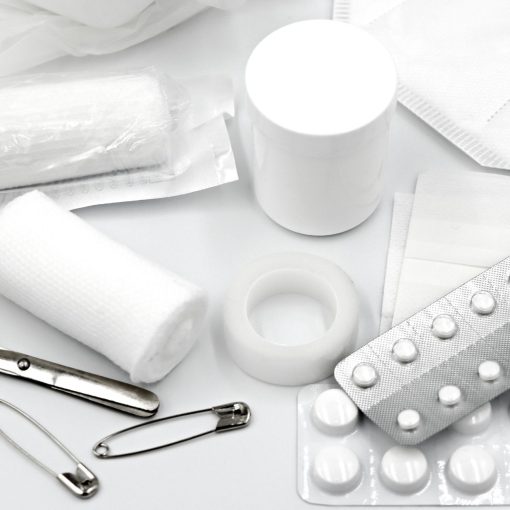When an injury happens, having the right medical wound care supplies at home, work, or even in your travel bag can make all the difference. Injuries such as cuts, scratches, and burns can occur at any time. The faster you clean, protect, and cover a wound, the quicker it can heal, and the lower the chance of infection.
Whether you are restocking your first aid kit refills & supplies or building a kit from scratch, knowing what to include is important. In this blog, you’ll find a simple checklist of items you should always have ready, plus tips on how to use them.

1. Adhesive Bandages
These are the most common wound care items. They come in different shapes and sizes to cover small cuts, blisters, or scratches. Adhesive bandages protect the wound from dirt and germs, while also preventing further injury. Always keep a variety in your kit.
2. Sterile Gauze Pads
For larger wounds, gauze pads are perfect. They soak up blood, protect against bacteria, and allow the wound to breathe. Keep them in different sizes so you can handle both small and bigger injuries.
3. Medical Tape
Gauze pads don’t stick by themselves. Medical tape holds them in place without causing skin irritation. Go for hypoallergenic options if you have sensitive skin.
4. Antiseptic Wipes or Solutions
Cleaning a wound before dressing it is a must. Wound cleaning products such as antiseptic wipes, hydrogen peroxide, or iodine help kill germs and reduce the risk of infection. Remember to clean gently to avoid damaging the skin.
5. Antibiotic Ointment
After cleaning, applying an antibiotic ointment can speed up healing and prevent infections. A thin layer is usually enough to protect the wound.
6. Scissors and Tweezers
Scissors help you cut bandages or tape neatly. Tweezers are useful for removing splinters, glass pieces, or dirt from the wound before dressing it.
7. Burn Gel or Cream
Minor burns need special care. Burn gels cool down the skin, reduce pain, and promote healing. For quick relief, so make sure to keep a small tube with you.
8. Elastic Bandages
These are helpful for sprains, strains, and securing large dressings and provide gentle pressure, which can reduce swelling.
9. Cotton Balls and Swabs
Cotton balls are great for applying antiseptics, and swabs help clean small wounds or apply ointments precisely.
10. Gloves
The use of disposable gloves is beneficial for the protection of both the injured individual and yourself from germs. Always wear gloves when handling blood or cleaning wounds.
11. Eye Wash Solution
Accidents can happen to the eyes too. An eye wash bottle helps rinse out dust, chemicals, or small particles.
12. Instant Cold Packs
For swelling, bruises, or sprains, cold packs provide quick relief. To activate these packs, just squeeze them.
13. First Aid Manual
Even if you know basic first aid, having a small guide in your kit can be a lifesaver during emergencies.
Why Quality Matters
High-quality wound care products last longer, stick better, and protect more effectively. Cheap materials may not provide enough protection, leading to delayed healing or infections. Always choose products from trusted brands.
Livingstone International – Your Trusted Partner in Wound Care
When it comes to medical wound care supplies, quality, reliability, and variety matter. Livingstone International offers a full range of wound care essentials, from adhesive bandages to professional-grade wound cleaning products, all designed to meet Australian healthcare standards.
Whether you’re a healthcare professional, a business owner, or simply want the best for your family’s first aid needs, we ensure you get the right supplies every time.
FAQs
1. What is the most important item in a wound care kit?
A good antiseptic is essential because cleaning the wound is the first step in preventing infection.
2. How frequently should I check my first aid kit?
Every 3-6 months, you should go over your kit and replace any expired or outdated goods.
3. Can I use ordinary fabric instead of sterile gauze??
It’s not recommended. Cloth may carry bacteria and increase the risk of infection.
4. What’s the difference between adhesive bandages and gauze pads?
Adhesive bandages are for small wounds, while gauze pads cover and protect larger or deeper wounds.
5. Do wound cleaning products expire?
Yes, antiseptic solutions and ointments have expiration dates and lose effectiveness over time
6. Why choose Livingstone International for wound care supplies?
They offer high-quality, reliable products that meet strict safety standards, ensuring you’re always prepared.




